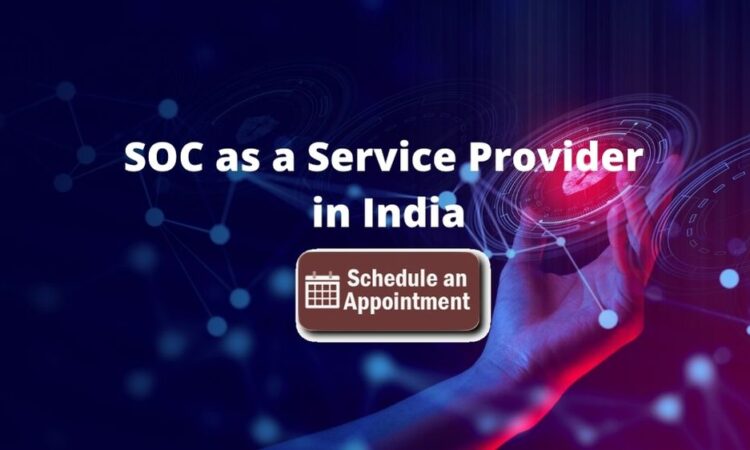
Why Content Marketers Must Master Keyword Strategies
Crafting Keyword-Rich Content Strategies
Why Content Marketers Must Master Keyword Strategies: The keyword strategy is at the heart of SEO and content marketing since it determines how you reach your intended audience.
Keywords are more than just buzzwords; people use these words and phrases in search engines.
Strategic keyword use can increase your content’s visibility in search results, engagement, and traffic.
The Impact of Keywords on SEO and Content Marketing
Keywords are essential in SEO and content marketing because they determine how search engines perceive and rank material.
In terms of SEO, strategically incorporating relevant keywords into website content enables search engines to associate your pages with user queries, increasing the likelihood of higher rankings.
Incorporating the right keywords into your content can significantly impact its online visibility and searchability. It can also impact your site’s SEO ranking and the content’s reach and efficacy.
To be genuinely effective, your keyword approach must be consistent with your marketing objectives. These objectives include increasing brand recognition, generating new leads, and closing transactions.
Understanding Your Audience.
When developing a keyword strategy that is likely to succeed and resonate with your target audience, you must first understand their desire. Let’s look at some methods you might use to understand your audience better.
It is identifying your target audience.
Knowing who you want to reach is the first step in creating a marketing strategy. Define your target audience’s demographics, interests, and habits to aid keyword research.
It’s important to remember that keyword research is a constant process. Regularly assess and adjust your keyword strategy to account for changes in your industry, audience preferences, and search engine algorithms.
By remaining proactive and responsive, you can better align your content with what your target audience is actively searching for.
How to Determine What Your Audience Searches for
Understanding your audience’s needs is essential for developing an effective keyword strategy. Here are some steps to help you determine your audience’s interests and needs:
Conduct audience research.
Begin by researching your target audience. Understand their demographics, interests, behaviours, and preferences. Data collection strategies include Google Analytics, social media analytics, and customer surveys.
Develop buyer personas.
Create detailed buyer personas that represent your ideal customers. These personas should describe your target audience’s issues, goals, and pain points. This may help you focus your keyword strategy on meeting their specific needs.
Analyse competitor keywords.
Investigate the keywords that your competitors are targeting. SEMrush, Ahrefs, and SpyFu let you learn the terms your competitors use to attract website traffic. Analysing their tactics can help you with your keyword planning.
Use keyword research tools.
Use keyword research tools like Google Keyword Planner, Ubersuggest, and AnswerThePublic to locate relevant terms. These tools can provide data on search volume, competition, and related terms.
Stay on top of social media.
Pay attention to the social media platforms where your target audience is engaged. Examine the debates, comments, and questions surrounding your business or niche. Social media platforms often reflect contemporary interests and concerns.
Learn about your audience’s questions and terms using search engine data, social media listening, and customer feedback.
Competitive Keyword Analysis
Understanding your competitors’ actions is critical to developing an effective keyword strategy. Let’s discuss how to assess your competition better so that your keyword strategy stands out.
Understanding the competitive landscape.
Understanding the competitive climate in keyword strategy for content marketing is essential for gaining a strategic advantage.
First, tools like SEMrush or Ahrefs can identify and assess significant competitors’ top keywords, search rankings, and content strategies.
Evaluate their content richness and presentation, looking for areas where you may provide value.
Examine backlink profiles to gain a better understanding of their link-building tactics.
Monitoring and researching industry trends on social media can help you better grasp consumer sentiment and emerging topics.
If applicable, assessing competitors’ paid advertising strategies adds another layer of information. You should update your analysis frequently to reflect changing market conditions.
This comprehensive process allows you to fine-tune your keyword strategy, find untapped opportunities, and create content that effectively resonates with your competitive landscape.
Tools for Analysing Competitors’ Keywords
Keyword tools are essential for creating an efficient keyword strategy since they reveal helpful information about user behaviour, search trends, and competition.
These tools, which include Google Keyword Planner, SEMrush, and Ahrefs, provide data on search volume, competitiveness, and related phrases.
Businesses can use these tools to identify high-performing keywords relevant to their target audience’s interests and needs.
Furthermore, the tools aid in identifying untapped prospects, optimising search engine content, and the long-term success of specific keywords.
A well-thought-out keyword strategy improves a website’s exposure, attracts targeted visitors, and boosts overall search engine rankings, all of which contribute to the success of digital marketing initiatives.
Keyword Research Techniques:
Look at essential keyword research methods to help you create a successful strategy.
Fundamentals of Keyword Research
The initial stage in search engine optimisation and internet marketing is conducting thorough keyword research. It comprises identifying and selecting acceptable search terms relevant to your company’s aims.
To better understand the demands of your target clients, begin by researching them and developing buyer personas. Keyword research tools can help you identify high-volume, low-competition keywords.
Consider employing short and long-tail keywords to reach an extensive and focused audience. Analyse rivals to identify gaps and opportunities.
Concentrate on intent-based keywords that are relevant to your content.
Regularly update and improve your keyword strategy to suit market trends and user behaviour changes.
Finding the proper keywords for your content is critical for reaching the desired audience, increasing organic traffic, and supporting overall business goals.
Assess keyword relevance, difficulty, and search volume.
Not all keywords are created equal.
Consider keywords based on their relevance to your content, their difficulty in ranking, and the quantity of searches they generate.
Finding Long-Tail Keywords.
Long-tail keywords are specific and comprehensive search phrases that typically contain three or more words.
Long-tail keywords, as opposed to short-tail keywords, are more targeted and distinctive to specific themes, products, or services.
Analyse your target audience’s specific demands and issues to identify long-tail keywords.
Begin with broad-seed keywords related to your business, then use keyword research tools to identify potential long-tail variations.
To get further ideas, use Google’s autocomplete tool and seek related queries at the bottom of the results page.
Analyse internet forums, Q&A websites, and community discussions to identify frequently asked terms or questions.
Keyword Optimisation Strategies.
Let’s review some keyword optimisation strategies to help you choose terms that are certain to rank on Google.
Incorporating Keywords in Your Content Effectively
Conduct intensive keyword research to find relevant terms that match your content’s purpose.
To signal the material’s concentration to search engines, employ primary keywords in prominent places such as titles, headings, and the first paragraph.
Incorporate keywords effortlessly into the content, ensuring they flow naturally and increase readability.
Use variations of your main keywords to reach a bigger audience without sounding repetitive.
Prioritise user experience by generating helpful, informative, and engaging content that matches the user’s expectations.
Once you’ve chosen your keywords, you must include them naturally in your content to provide value to the reader.
On-Page SEO Best Practices
Keyword Optimisation
Conduct extensive keyword research and strategically place essential keywords in your page’s title tags, meta descriptions, headers, and throughout the content.
Prioritise providing users value while ensuring the keywords blend in with the content.
Quality Content Creation
Create engaging, high-quality content that speaks directly to your target demographic.
Google values material that promotes a favourable user experience; therefore, it strives for well-structured, informative, and unique content.
To keep your information relevant, do regular updates and refreshes.
Optimised Meta Tags
Create engaging and descriptive title tags and meta descriptions for each page. These tags appear snippets in search engine results and can dramatically influence click-through rates.
Ensure that they appropriately reflect the page’s content while adding desired keywords.
User-friendly URL Structure
Optimise your URL structure to be both user and search-engine friendly. Use short, descriptive URLs, including relevant keywords.
Avoid utilising extra parameters, numbers, or symbols that could mislead users and search engines.
Internal Links and Site Structure
Create a clean and logical site layout, including well-organised navigation. Use internal linking to connect relevant pages on your website.
This helps customers navigate and distribute link equity throughout your site, improving overall SEO.
Use descriptive anchor text for internal links, integrating relevant keywords as needed.
Measure Keyword Performance
Let’s review how to measure keyword performance to see how your plan works and where you can improve.
Tracking rankings and analysing performance
You can track keyword performance using any of the methods listed above. You can also monitor your term positions in search engine results pages regularly and see how they vary over time.
Find the most effective keywords for increasing organic traffic and eliminate the bad ones.
Consider click-through rates, impressions, and average locations when evaluating your content’s exposure and appeal.
Identify trends and patterns in previous data, and adjust your strategy regularly to match the changing search landscape.
Keep an eye on your competitors’ rankings and strategies to stay competitive.
Adjusting Your Strategy Based On Performance Data
Adjusting your keywords based on performance data is essential for long-term SEO success. Begin by tracking important performance indicators like rankings, click-through rates, and organic traffic resources.
Identify high-performing keywords that will help you reach your goals and focus on improving content around them.
Analyse the causes of underperforming keywords, such as high competition or shifting user intent.
Consider tailoring your content to match user requests better or investigating alternative, less competitive keywords. Monitor emerging trends and adjust your keyword strategy accordingly.
Please review and update your information frequently to ensure it remains relevant and high-quality.
Flexibility and sensitivity to performance data are critical for maintaining and improving your website’s search engine rating.
The post Why Content Marketers Must Master Keyword Strategies appeared first on Ezi Gold.
The Article Why Content Marketers Must Master Keyword Strategies Was Found On https://limitsofstrategy.com
The Article Why Content Marketers Must Master Keyword Strategies First Appeared ON
: https://ad4sc.com









